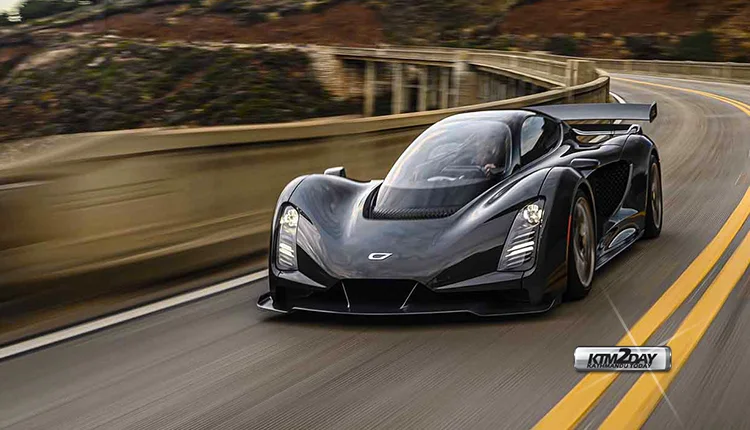Czinger 21C: The first hypercar made with artificial intelligence and 3D printing


When we think of manufacturing process of a car, gigantic facilities with long production lines and a complex ballet of robots performing precise movements automatically come to mind, however, the essence of the process has not changed in a century. The idea of a more efficient, flexible and dynamic construction amounts to a gigantic challenge, but the folks at Czinger Vehicles seem to have hit the mark with their Czinger 21C, a hypercar designed with artificial intelligence, and built using 3D-printed aluminum and titanium parts.
Printing a car in 3D is not something new that we say. Some of our followers probably remember Strati, made with a total of 40 pieces, but a little closer in time appears the Blade project, prototype designed by Divergent Microfactories (later Divergent 3D) and its CEO, Kevin Czinger. The Blade used a combination of 3D printed aluminum nodes with carbon fiber tubes for its overall connections, resulting in an extremely lightweight, highly efficient construction car.
The good news is that Czinger never left the Blade line, and founded Czinger Vehicles to deepen and optimize that construction method. Today’s automakers are gigantic, demanding impressive surfaces for their production lines. The proposal of Czinger Vehicles is to combine a design based on artificial intelligence with the latest in 3D printing, and apply an autonomous vertical mounting system that occupies just 15 by 15 meters. The best part? They already built a car that way: The Czinger 21C.
2.88 liters, V8 Twin Turbo, 1,250 hybrid horses with the help of two electric motors, 0 to 100 in 1.9 seconds, and a theoretical maximum speed of 434.5 kilometers per hour in its track version. The Czinger 21C certainly has the power and appearance to qualify as a hypercar. The in-line cab is inspired by both Czinger’s experience with motorcycles, and the famous Lockheed SR-71 Blackbird. In the company they suggest that this configuration is optimal in the aerodynamic and in “the emotional” for the pilot.
But even more interesting is the combo of artificial intelligence and 3D printing. First, engineers specify fundamental parameters such as connection points, tolerances and mechanical properties, and artificial intelligence is responsible for designing the part, optimizing the use of material. Their creations are very unusual for a car, and with a definitely “organic” look, but they do not sacrifice durability or strength at any time. And secondly we come to the additive manufacturing of each component, 3D printing of metals such as aluminum and titanium. Although I have personally seen some people do wonders with metal, from a practical point of view, only a computer and a 3D printer can manufacture the parts that the Czinger 21C requires.
Our last paragraph is dedicated to the “Automated Unit” that Czinger created for the assembly of the 21C. It is a series of robotic arms that occupy an area of 15 by 15 meters, and work in absolute synchronization. Some arms can lift and rotate the chassis, while the rest install the parts. The entire assembly process takes about 3,000 hours, but the basic structure of the 21C is assembled in less than an hour. Another advantage is that the automated units are reprogrammed with relative ease, moving from one car model to the next without frights.
The Czinger 21C was officially unveiled in London in early March (COVID-19 forced the original plans to change),and the company confirmed that total production will be 80 units divided into two versions: one “legal”, and the other intended for race tracks. Price? $1.7 million.
Official site: Click here















